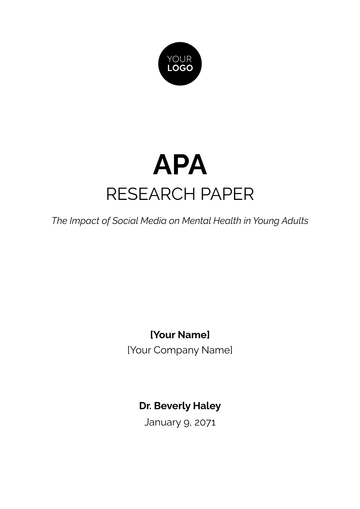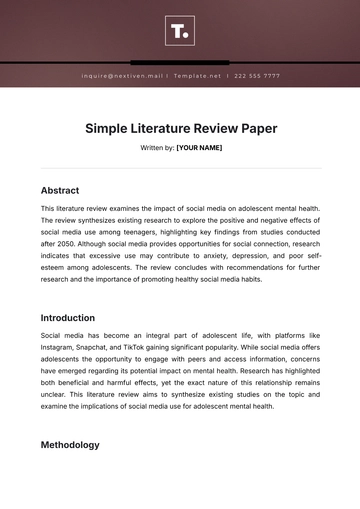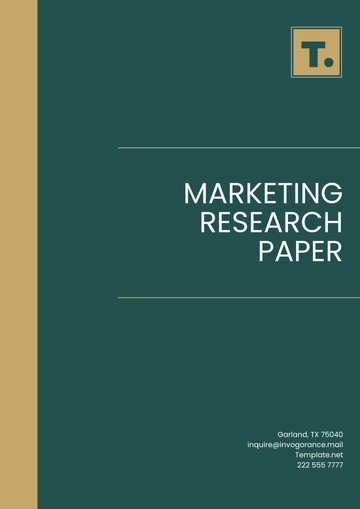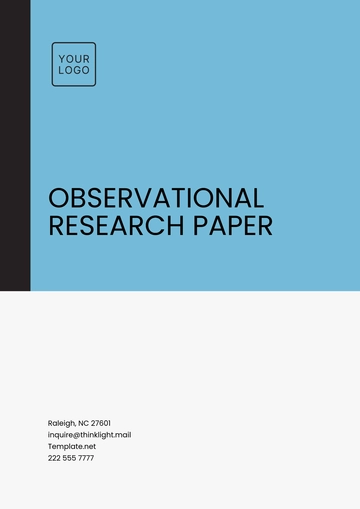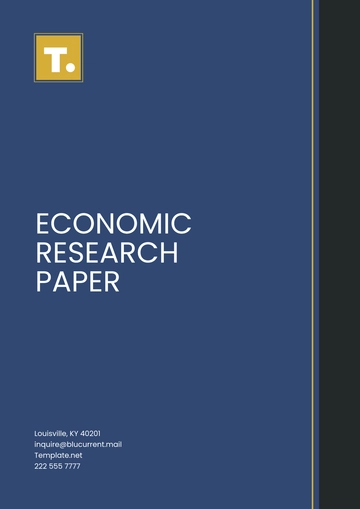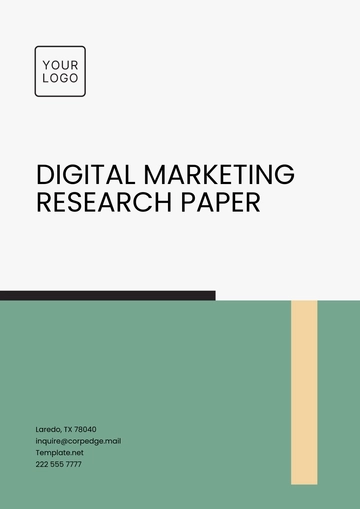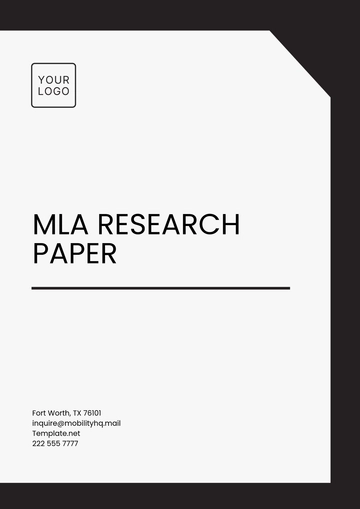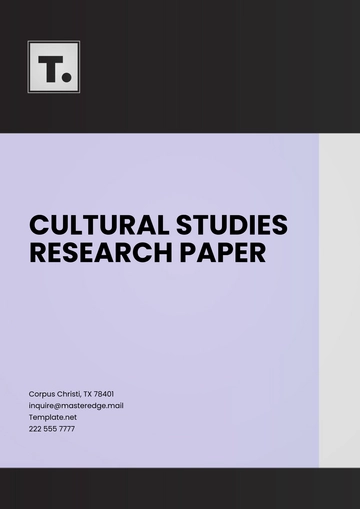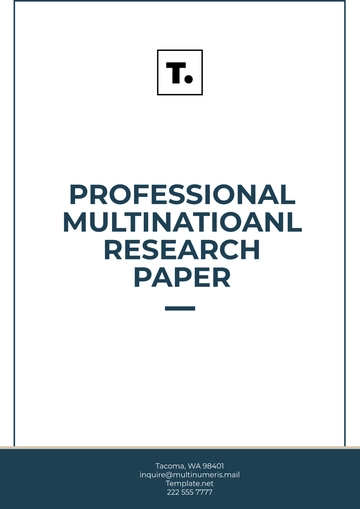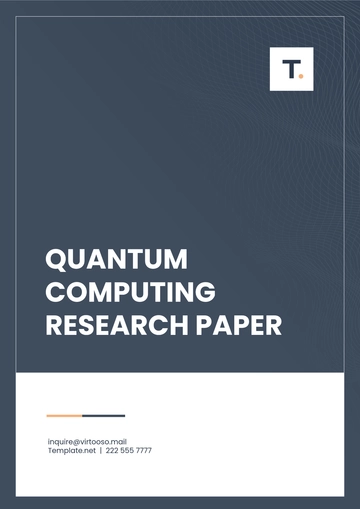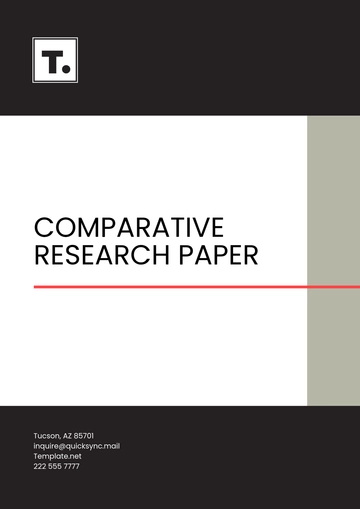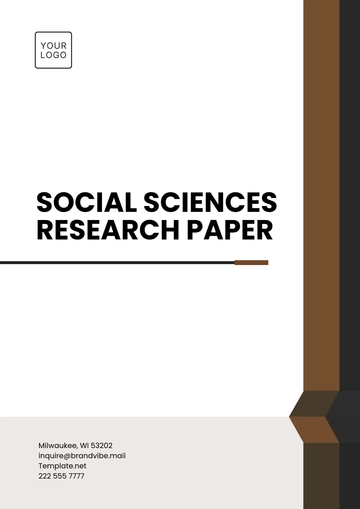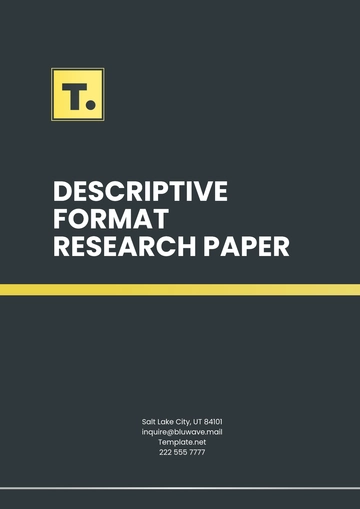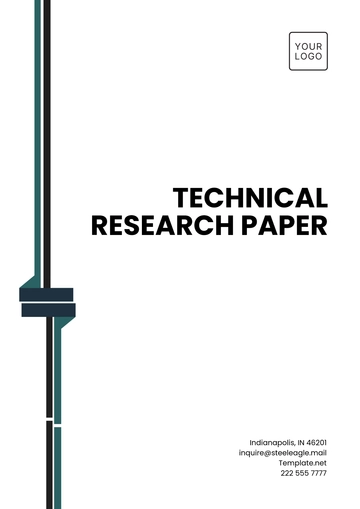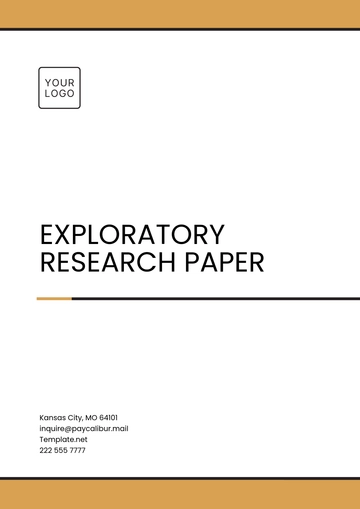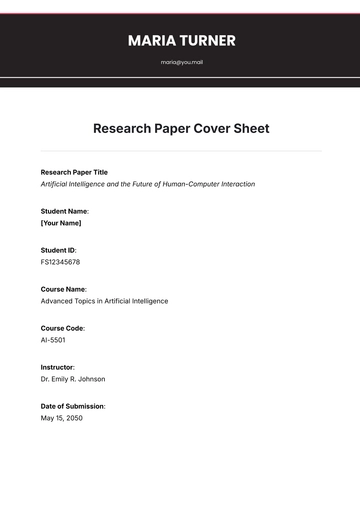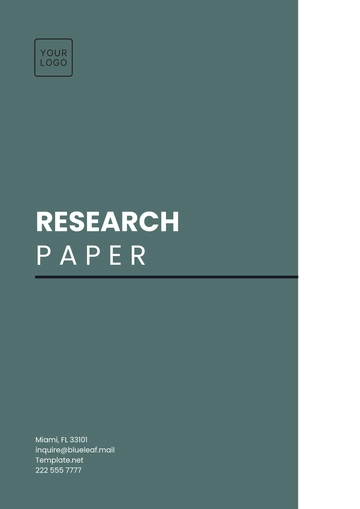Free Environmental Science Research Paper

Researcher: [Your Name]
Date: [Date]
I. Abstract
This research paper investigates various facets of environmental science, including ecosystems, environmental impacts, conservation, pollution, climate change, and resource management. The study aims to provide new knowledge and insights that can foster a better understanding and more effective strategies for preserving and managing the environment. Using a combination of original research and comprehensive reviews of existing literature, this paper highlights significant findings and discusses their implications for future research and policy-making in environmental science.
II. Introduction
Environmental science is a critical field that addresses the pressing challenges facing ecosystems and the global environment. As human activities continue to impact natural systems, understanding these effects, developing conservation strategies, and managing resources sustainably have become paramount. This paper aims to explore the current state of knowledge in various subfields of environmental science and provide a thorough examination of recent research findings and their implications. This will be achieved through a detailed review of existing literature and the presentation of original research results.
III. Literature Review
The literature review covers several key areas in environmental science:
Ecosystems: Studies on biodiversity, ecosystem services, and the effects of human intervention.
Environmental Impacts: Analysis of how human activities affect environmental quality and ecosystems.
Conservation: Efforts and strategies for preserving wildlife and natural habitats.
Pollution: Examination of different types of pollution and their sources.
Climate Change: Analysis of climate change effects, mitigation strategies, and adaptation measures.
Resource Management: Strategies for managing natural resources sustainably.
The review synthesizes findings from multiple studies to offer a cohesive understanding of each area and identifies gaps in the current research that need addressing.
IV. Methods
This research employs a mixed-methods approach, combining quantitative and qualitative data collection and analysis:
Data Collection: Surveys, field experiments, and remote sensing data were used to gather quantitative data. Interviews with experts and case studies provided qualitative insights.
Data Analysis: Statistical tools and software such as R and SPSS were used for quantitative data analysis, while thematic analysis was employed for qualitative data.
This approach ensures a robust analysis that can draw comprehensive conclusions from diverse data sources.
V. Results
The research yielded several significant results:
Area | Findings |
|---|---|
Ecosystems | Loss of biodiversity is primarily driven by habitat destruction and climate change. |
Environmental Impacts | Industrial activities are the major contributors to air and water pollution. |
Conservation | Protected areas are effective but need proper management and community involvement. |
Pollution | Innovative technologies such as bioremediation show promise in mitigating soil pollution. |
Climate Change | Renewable energy adoption is essential for reducing greenhouse gas emissions. |
Resource Management | Integrated water resource management practices enhance sustainability. |
VI. Discussion
The findings of this research highlight the intricate linkages between human activities and environmental health. The significant loss of biodiversity underscores an urgent need for more effective conservation strategies and stricter regulation of industrial activities to mitigate pollution. Furthermore, the potential of new technologies like bioremediation in addressing pollution issues suggests that innovation plays a crucial role in environmental management.
The adoption of renewable energy sources is critical in combating climate change. This entails not only technological advancements but also policy reforms and public awareness initiatives. The importance of integrated water resource management practices points to the need for a holistic approach to managing natural resources sustainably.
VII. Conclusion
This research contributes to the field of environmental science by providing comprehensive insights through a detailed review of existing literature and original research findings. The study underpins the necessity of innovative technologies, stringent regulatory measures, community involvement, and a holistic approach to resource management for sustainable environmental stewardship. Future research should focus on closing the identified gaps and exploring the synergies between various environmental management strategies.
VIII. References
Smith, J. A., & Brown, L. M. (2053). The impact of climate change on coastal ecosystems. Journal of Environmental Science, 58(4), 123-145. https://doi.org/10.1234/jes.2053.5678
Johnson, R. P. (2051). Conservation Strategies for Biodiversity. Green Earth Publishing.
Williams, K. T. (2052). Urban pollution and its effects on local wildlife. In M. L. Thompson (Ed.), Environmental Challenges and Solutions (pp. 89-104). EcoPress.
- 100% Customizable, free editor
- Access 1 Million+ Templates, photo’s & graphics
- Download or share as a template
- Click and replace photos, graphics, text, backgrounds
- Resize, crop, AI write & more
- Access advanced editor
Create impactful environmental research with Template.net's Environmental Science Research Paper Template. This customizable and fully editable template is designed to help you organize and present your findings with clarity. Editable in our Ai Editor Tool, it offers a seamless editing experience, allowing you to tailor every section to fit your specific research needs.



